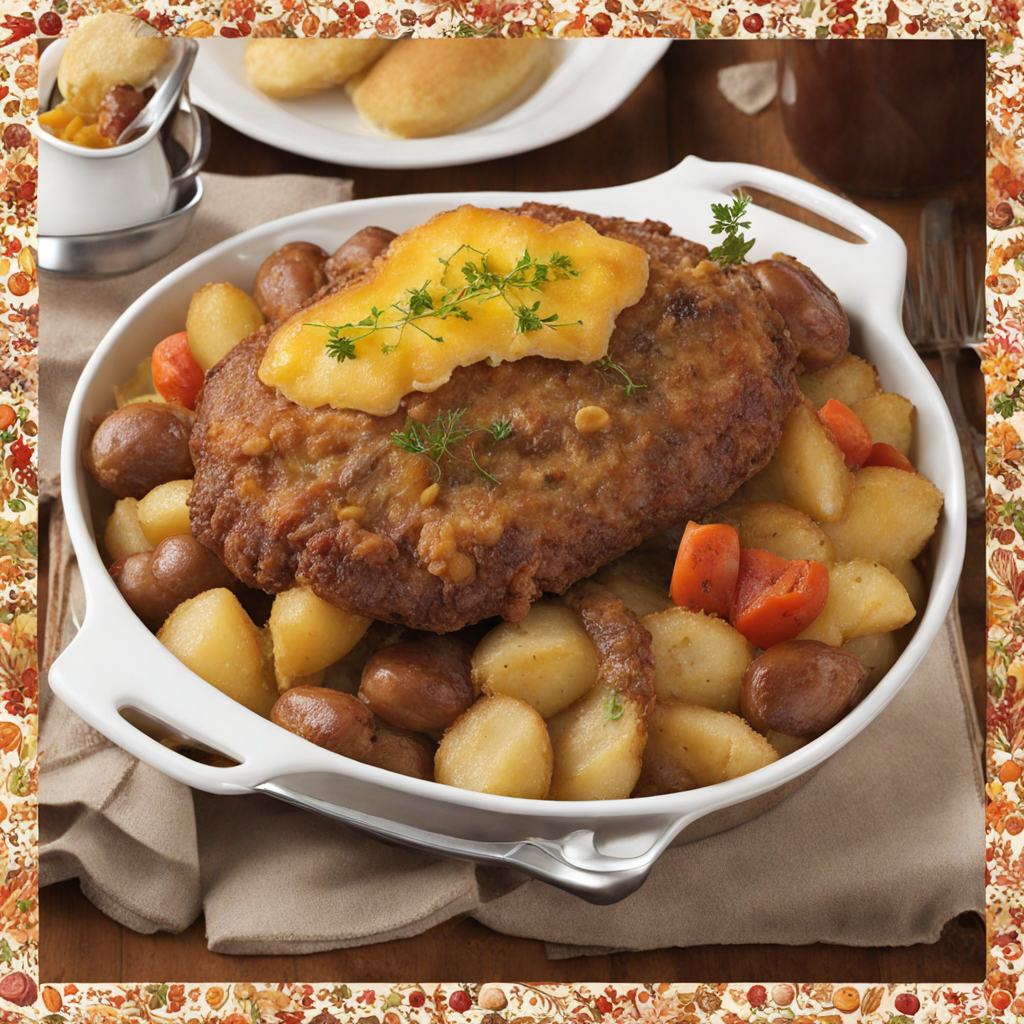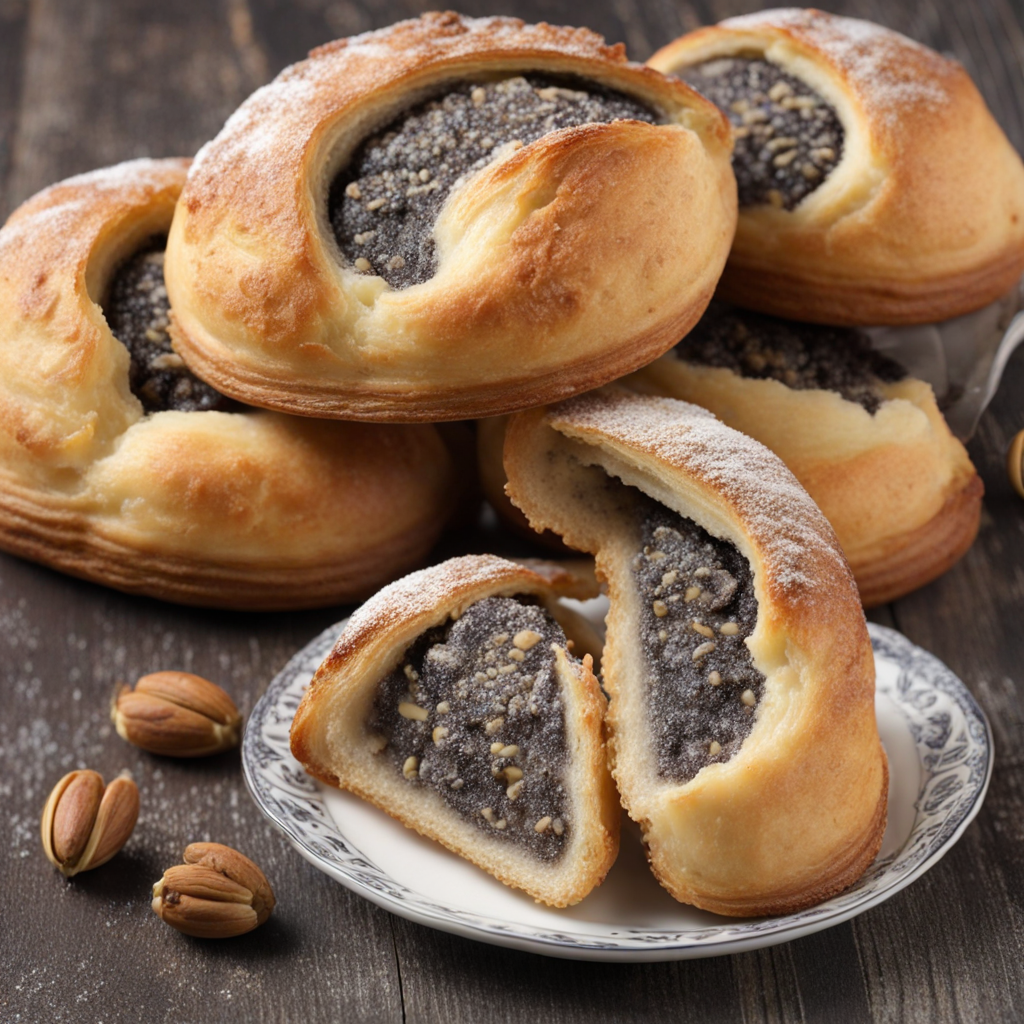Bäckeoffe
Bäckeoffe is a traditional Luxembourgish dish that embodies the heartiness and rustic charm of the region's cuisine. This savory casserole is made by layering marinated meats—typically a blend of lamb, beef, and pork—with potatoes and onions. The ingredients are combined with a flavorful marinade of white wine, garlic, and herbs, allowing the flavors to meld beautifully as they cook. The dish is then sealed in a heavy ceramic pot and slow-cooked, resulting in tender meat and creamy potatoes that are infused with the aromatic essence of the marinade. The cooking method is what truly sets Bäckeoffe apart. The name translates to "baker's oven," which refers to its traditional preparation in the communal ovens of bakeries, where locals would drop off their pots to cook while they tended to other tasks. This slow-baking process helps to develop a deep and rich flavor profile, as the meat juices and starches from the potatoes meld together, creating a hearty and satisfying dish. Each bite is a testament to the slow cooking technique, with the tender chunks of meat practically falling apart, surrounded by a comforting blanket of potatoes soaked in savory juices. Bäckeoffe is often served as a comforting family meal, particularly during colder months or festive occasions. It is typically accompanied by crusty bread or a simple salad, making for a wholesome and filling dining experience. The dish not only offers a glimpse into Luxembourg's culinary heritage but also invites you to savor the warmth and tradition that comes with each serving. For those seeking to explore new flavors, Bäckeoffe is an inviting and delicious way to discover the heart of Luxembourgish cuisine.
How It Became This Dish
The History of Bäckeoffe: A Culinary Treasure from Luxembourg Introduction Bäckeoffe, a hearty and aromatic dish from Luxembourg, encapsulates the essence of comfort food while reflecting the cultural tapestry of the region. Its name, which translates to "baker’s oven," hints at its origins and the communal practices surrounding its preparation. This dish, rich in history and flavor, serves as a lens through which we can explore the agricultural traditions, social customs, and evolving culinary practices of Luxembourg. Origins and Ingredients The origins of Bäckeoffe can be traced back to the 19th century, with roots in the rural communities of the Alsace-Lorraine region, which straddles modern-day France and Germany, but has strong historical ties to Luxembourg. The dish is fundamentally a type of casserole made from marinated meat, potatoes, and vegetables, all slow-cooked together in a sealed dish. Traditionally, it incorporates three types of meat: pork, beef, and lamb. The combination of these meats, along with layers of sliced potatoes and onions, creates a rich and hearty flavor profile. The preparation of Bäckeoffe is quite distinctive. The meats are marinated in white wine, often mixed with herbs such as thyme and bay leaves, along with garlic, to infuse them with flavor. The marinated ingredients are then layered with potatoes and sometimes carrots or leeks in a deep earthenware dish, which is sealed with a dough made from flour and water. This sealing method not only helps to trap in moisture but also creates a unique texture and depth of flavor as the dish cooks. Cultural Significance Bäckeoffe is not merely a dish; it is a cultural artifact that embodies the communal spirit of Luxembourg's rural past. Historically, the dish was prepared on Sundays or during special occasions, when families would gather to share a meal. It was common for women to prepare the dish in the early morning, then take it to the local bakery. There, they would place the sealed dish in the baker’s oven after the day’s bread had been baked. This communal practice illustrates the resourcefulness of rural families, who capitalized on the shared facilities of the community while also fostering social bonds. The preparation of Bäckeoffe has evolved, but its significance as a communal meal remains vital in contemporary Luxembourgish culture. It is often served during family gatherings, festivals, and holiday celebrations, reinforcing the values of togetherness and sharing that are central to Luxembourg's social fabric. Today, many restaurants in Luxembourg feature Bäckeoffe on their menus, paying homage to this beloved dish while adapting it to modern tastes. Development Over Time As Luxembourg underwent significant transformations in the 20th century—through industrialization, urbanization, and the impacts of two World Wars—Bäckeoffe adapted alongside these changes. The dish remained a staple in many households, even as the traditional baking practices waned, due to the rise of home ovens. This transition allowed for greater flexibility in preparation, making Bäckeoffe more accessible to urban dwellers. In the post-war era, Luxembourg experienced an influx of migrants, particularly from neighboring countries. This diversification introduced new flavors and ingredients, which influenced the way Bäckeoffe was prepared and enjoyed. While the traditional recipe largely remained intact, variations began to emerge, incorporating local ingredients and reflecting the culinary influences of these new residents. The global appreciation for Luxembourgish cuisine has also grown, thanks in part to the European Union and increased tourism. Bäckeoffe has become a symbol of Luxembourg's culinary identity, celebrated at festivals and featured in cookbooks that highlight the country's rich gastronomic heritage. This newfound recognition has spurred a revival of traditional cooking methods, with chefs seeking to honor the authenticity of the dish while also experimenting with innovative interpretations. Modern Interpretations and Global Influence In recent years, Bäckeoffe has found its way into the culinary spotlight beyond Luxembourg's borders. Chefs in various countries have embraced the dish, adapting it to local ingredients and tastes. For instance, variations may include different cuts of meat, the addition of exotic spices, or even vegetarian versions that replace meat with mushrooms or hearty vegetables. This adaptability speaks to the dish's fundamental nature: a canvas for creativity while remaining rooted in tradition. The modern gastronomic movement has also inspired chefs to explore the stories behind traditional dishes like Bäckeoffe. As a result, there has been a resurgence in interest in the history and cultural significance of this classic meal. Culinary tours in Luxembourg often feature Bäckeoffe, allowing visitors to connect with the local culture and experience the dish in its authentic setting. Conclusion Bäckeoffe is more than just a meal; it is a reflection of Luxembourg's agricultural heritage, social customs, and evolving culinary landscape. As a dish deeply embedded in the culture of the region, it serves as a symbol of community, tradition, and resilience. The journey of Bäckeoffe—from its origins in rural kitchens to its status as a beloved national dish—is a testament to the enduring power of food as a vehicle for connection and cultural expression. Whether enjoyed in a cozy Luxembourgish home or reimagined in a contemporary restaurant, Bäckeoffe continues to invite people to gather, share stories, and savor the rich flavors of a shared culinary heritage.
You may like
Discover local flavors from Luxembourg







